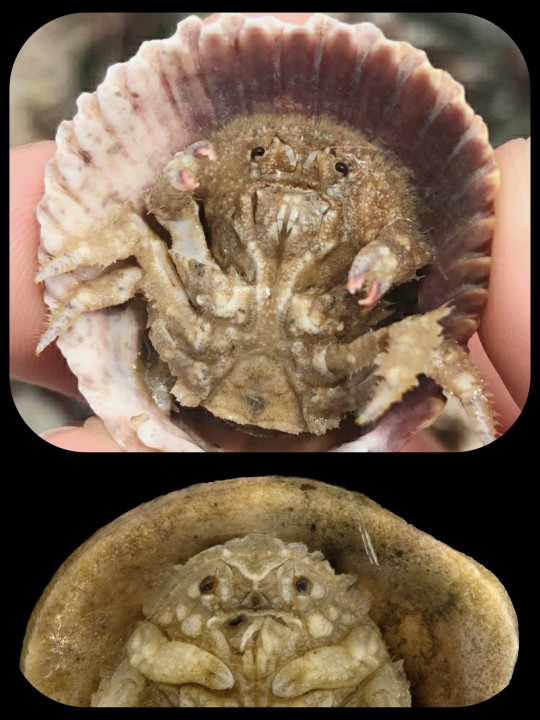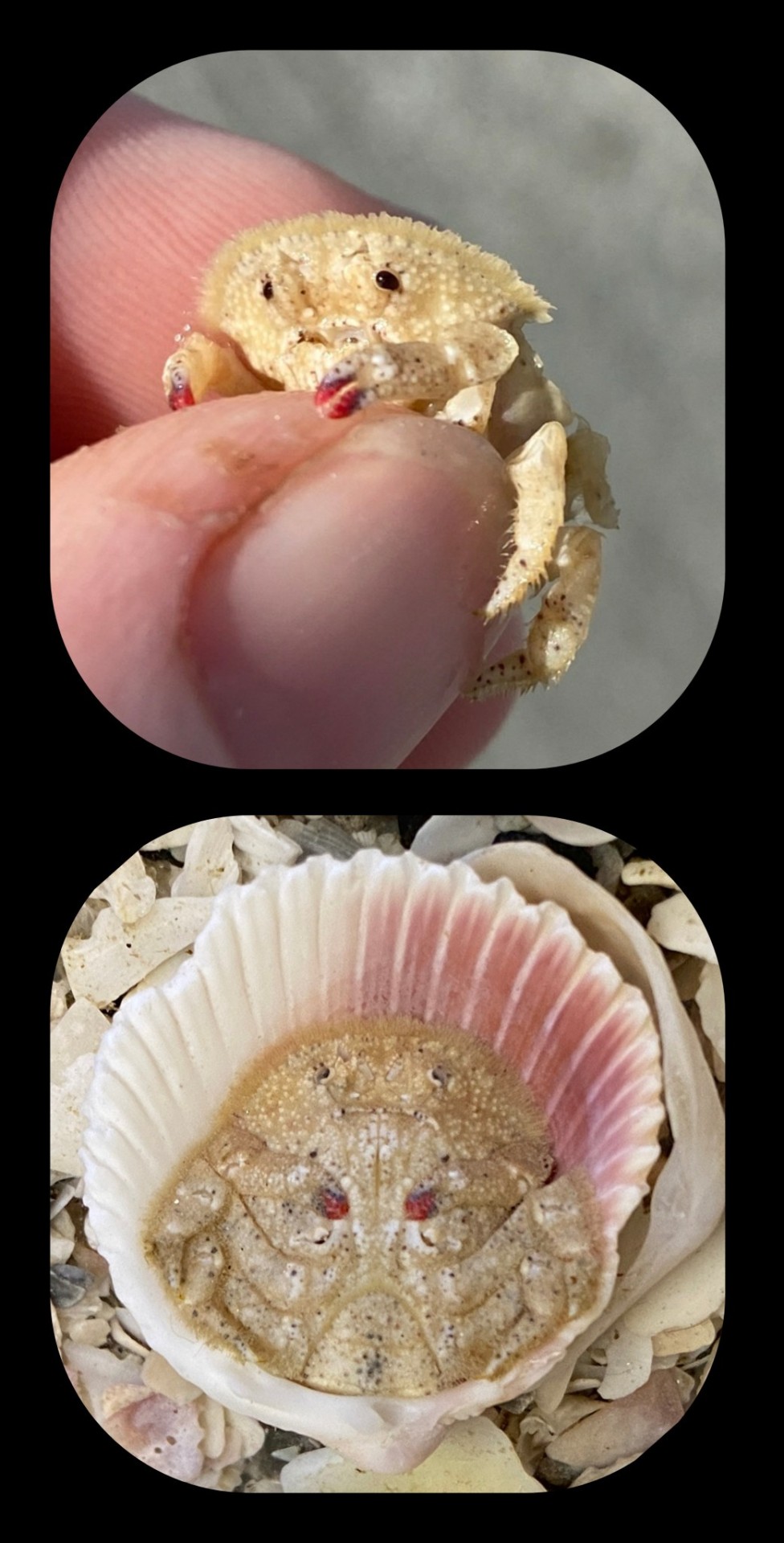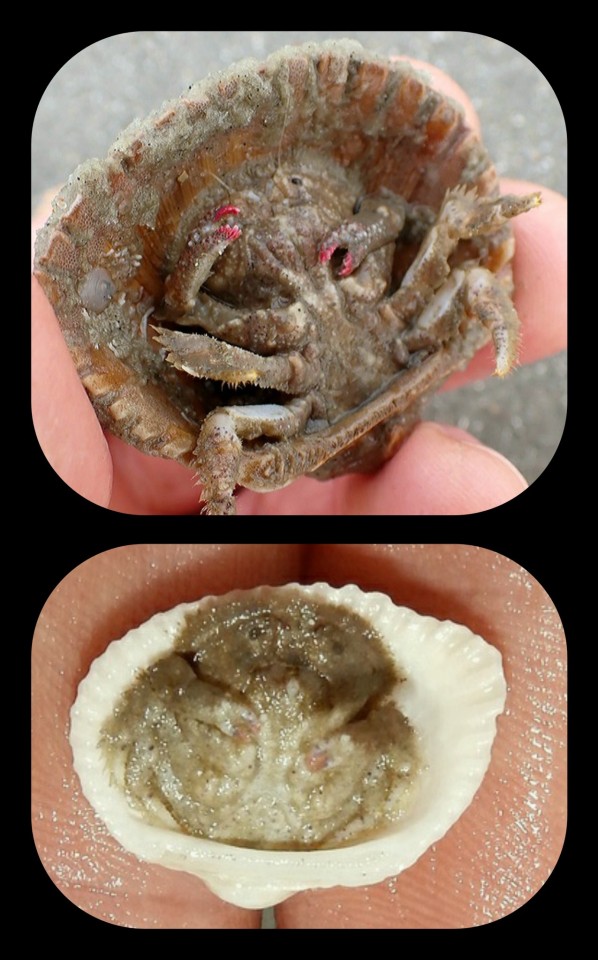#these guys look awfully crabby tho
Text
Shellback Crabs: these crabs create their own shields out of clamshells; their semi-membranous bodies can be pressed into the contours of the shell, producing a suction mechanism that holds the shell in place

The members of this genus (Hypoconcha) have a series of unique adaptations that facilitate this kind of camouflage behavior. Many of the Dromiidae crabs (e.g. hermit crabs, sponge crabs, shellback crabs, etc.) are equipped with a specialized pair of legs that enables the crab to hold a shell, sea sponge, and/or ascidian against their body, but shellback crabs also have a flexible, semi-membranous body that can be tucked more firmly into the contours of a bivalve shell, producing a suction mechanism that keeps the shell firmly locked in place.

The body of the shellback crab is also covered in a very fine layer of hair-like structures called setae, and when the crab presses itself against the shell, these membranous "hairs" can take on an almost translucent appearance, particularly around the margins of the crab's body.

I recently posted some photos/info about some of the crabs in the genus Lamarckdromia (which belongs to the same family) and as I was doing the background research for that post, I was just kind of mesmerized by all of these weirdly adorable crabs that seem to exist within the Dromiidae family tree. Each genus has its own unique adaptations that allow the crabs to use specific materials for camouflage -- some of them use living sponges, clamshells, ascidians, etc.
And I could not stop laughing at the little faces on these crabs. They've all got the same bemused/indignant expression...as if some random asshole has just walked up to them, shoved them over, and announced to the entire ocean that there's a crab hiding beneath that disguise; as if that actually happens to them quite a lot, and they're getting really sick of it.

Sources & More Info:
Crustaceana Monographs: Comparison of the Shell-Carrying Behaviors of Desmodromia, Conchoecetes, and Hypoconcha (the relevant info is on page 191)
South Carolina Department of Natural Resources: Shellback Crabs and their Larval Stages (PDF)
South Carolina Public Radio: Shellback Crabs
Again, I don't normally feature crustaceans on my blog...but I really couldn't resist this one.
#arthropod#crustacean#marine biology#sea life#crab#shellback crab#hypoconcha#evolution#biology#cute animals#nature is weird#these guys look awfully crabby tho
12K notes
·
View notes